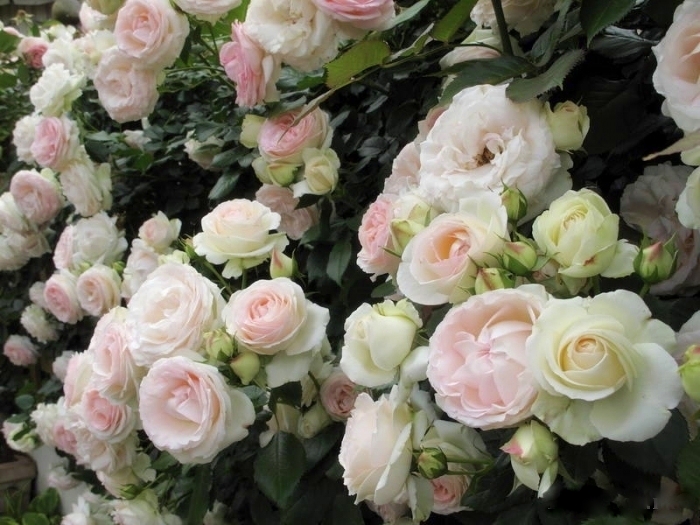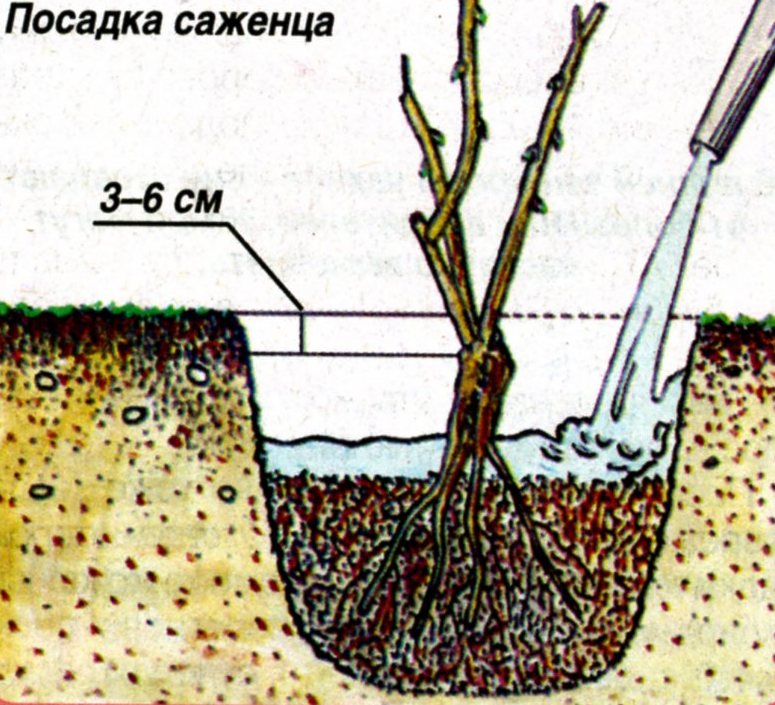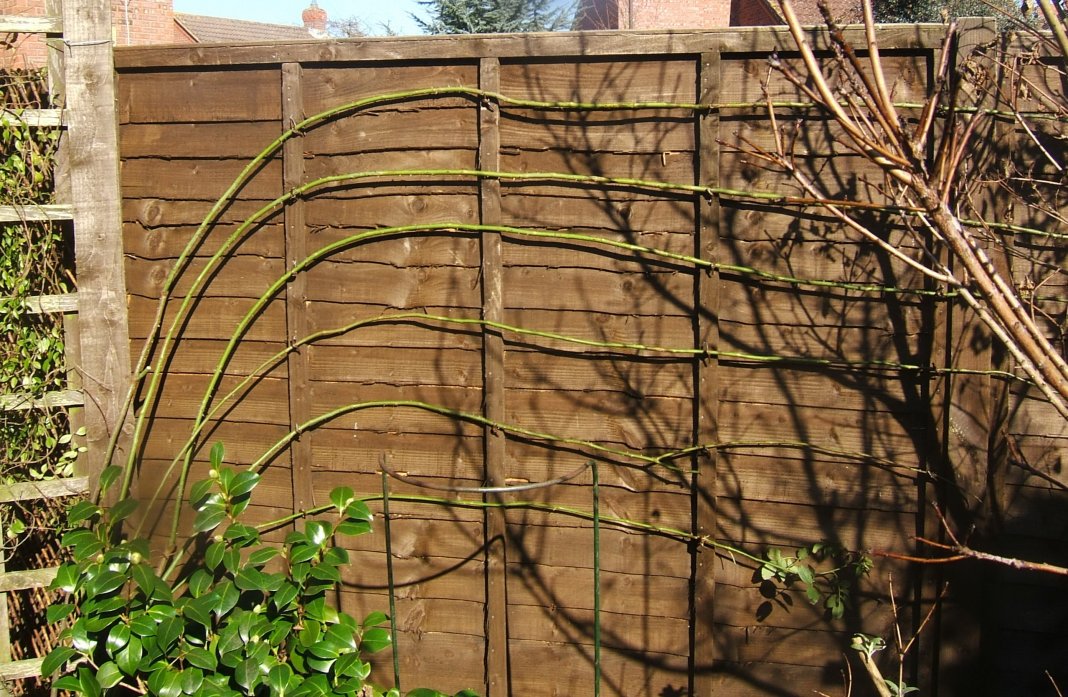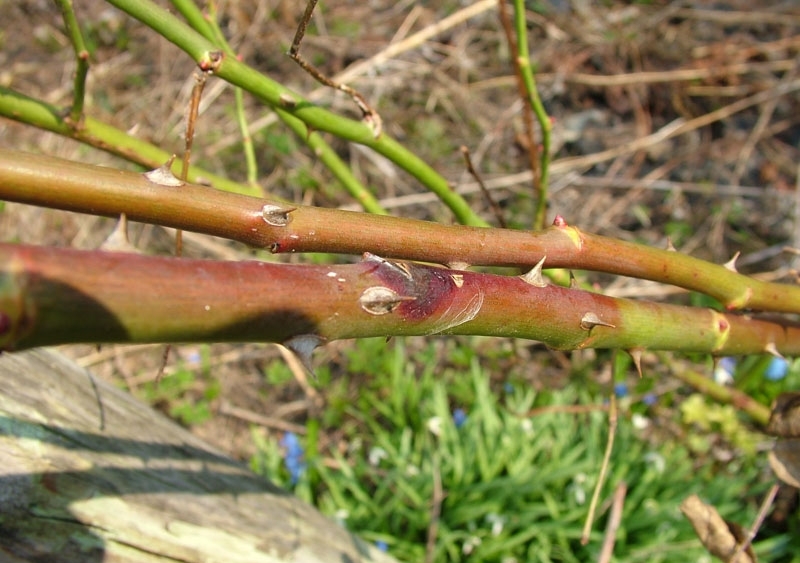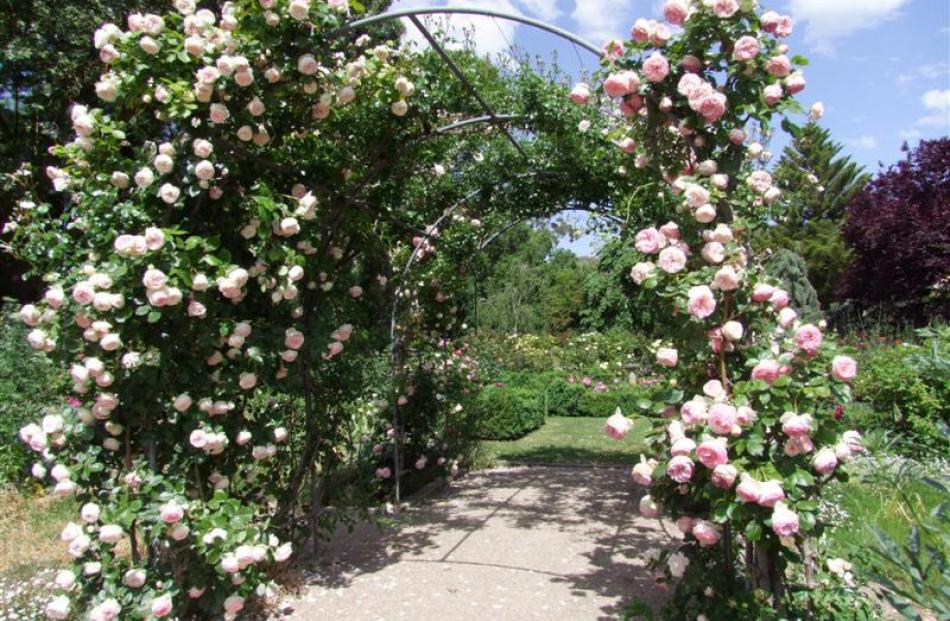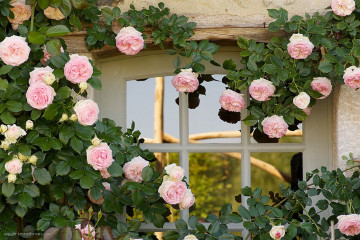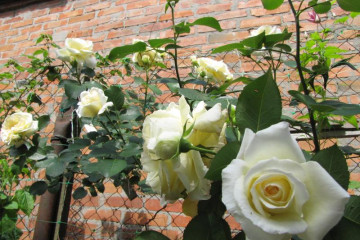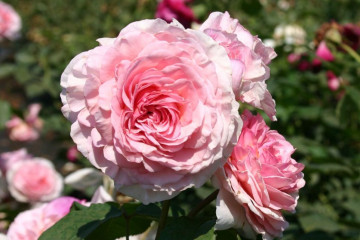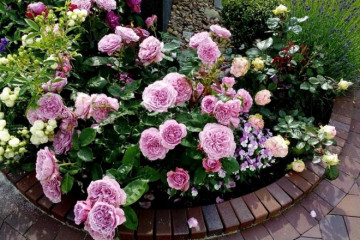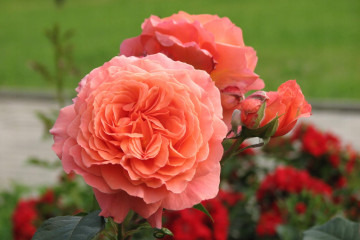Rose Palais Royal - characteristics of the climber
Content:
Rose Palais Royal (Palais Royal, MEIviowit, Blanc Pierre de Ronsard, Blushing Pierre de Ronsard, White Eden) was presented by Meilland breeders in 2005. This is one of the most successful descendants of the famous Eden Rose variety. The manufacturer recommends using a climber for vertical gardening of gazebos, balconies, columns, as well as in combination with small architectural forms.
Description of the variety
Vigorously growing climbing Palais Royal rose blooms profusely and continuously with a short break. Very large (12-14 cm) cream-colored dense double flowers have a nostalgic shape, gather in small brushes. The bud may have a green tint on the outer petals and a porcelain-pink dusting in the center. In full dissolution, the shades fade, the edges of the petals curl elegantly. The aroma is practically not felt.
It blooms in waves, during the season it produces clear 2-3 waves in a temperate climate. Single buds appear between flowering. Leaves are dense, semi-glossy and disease resistant. Densely branched bush with a width of 1.5-2 m, in length it can twist up to 3.5 m.
Open ground planting rules
In temperate climates, roses are planted in the first half of autumn or in the second half of spring. When choosing a seedling, you need to pay attention to the following characteristics;
- the presence of 2-3 healthy shoots with live green bark;
- well-developed taproot with branches and small roots without swelling and thickening;
- intact root collar.
Seat selection
For landing, you should choose a place with good lighting, sheltered from the wind. The variety does not lose its decorative effect in full sun, it can be placed in the southern or southeastern part of the site. With insufficient lighting, the plant will bloom worse and give a small increase in shoots. A prerequisite for choosing a landing site is the occurrence of groundwater at 1.5-2 m from the surface.
The soil
The Palace Royale rose will be able to fully reveal its potential on fertile, organic-rich, well-drained soil. In areas with poor soil, it is recommended to replace a layer up to 50 cm with a fertile one. For comfortable rooting and development of the seedling, it is recommended to fill the planting hole with a prepared soil mixture:
- rotted cow or horse manure;
- peat;
- vegetable compost;
- sand;
- sod layer.
Landing
A seedling with an open root system is placed in water for a period of 1 hour to 1 day before planting. A growth stimulant or a rooting agent can be added to the water.
When planting, shoots are shortened to 30-35 cm, broken and damaged parts are removed. It is also necessary to refresh the cuts on the roots to make it easier for the young plant to access moisture and nutrients. With a sharp pruner, the roots are cut to 30 cm, to live white tissue.
A pit for planting is prepared with a depth and diameter of 50 cm.When a group planting, it should be borne in mind that for a comfortable growth of an adult rose, a space of about 3 m is required.
Step-by-step instruction:
- The prepared seedling is placed in a tucked hole at a slight slope, so that later the rose can be easily laid under a winter shelter.
- The roots of the plant must be spread evenly over the bottom.
- The inoculation site is buried 10-13 cm below the soil surface.
- The pit is gradually filled with earth, alternating between adding soil and watering.
- The last layer is tamped and watered abundantly.
After the moisture is absorbed, soil is added around the plant as needed.
To protect the seedling from the bright spring sun, use spruce branches or special garden material. At first, a young plant especially needs regular soil moisture. After watering, the earth is loosened, the seedling is hilled.
What care does the rose of the Palais Royal require?
To preserve the decorativeness of the Palace Royale Rose throughout the season will help:
- abundant watering: 12-15 liters of water during the dry season;
- loosening the root area for soil aeration;
- regular weeding;
- preventive treatment of the plant, the soil around it from fungal diseases;
- seasonal feeding with organic and mineral fertilizers.
Pruning
The main pruning of the rose should be carried out in the spring, when the threat of recurrent frosts disappears and the plant can be freed from shelter. First of all, damaged, poorly overwintered branches, as well as shoots with dark spots of an infectious burn, are removed.
A safe rule that will allow you to regulate the number of shoots of a climbing rose: the old lashes are removed exactly as much as they have grown from the base of the rose bush during the season.
In order not to harm the climbing beauty when trimming, the following rules must be observed:
- the procedure is carried out with a sharp disinfected instrument, it is important that the cut is even without tears and cracks, scraps of bark and tissues;
- cut the shoot at an angle of 45 ° 1.5-2 cm above the outer bud, so moisture will not accumulate at its base;
- the rose bush needs to be thinned regularly so that the plant is well ventilated and evenly illuminated;
- after pruning, fresh cuts must be treated with garden varnish, a solution of ferrous sulfate or a fungicide.
For a rose up to two years old, it is enough to carry out sanitary pruning in spring.
Winter care
Before wintering, the rose should be fertilized with potash-phosphorus fertilizer to make it easier for it to survive the frosts. The climber is carefully removed from the support and gradually bent down. It is necessary to cut off diseased branches and foliage. All plant residues are burned so that spores of fungal diseases do not spread throughout the garden. Under the winter shelter, the rose is highlighted with a mixture of soil with sawdust or sand.
For the northern regions, a warmer frame shelter is required; for a temperate climate, it is enough to wrap the lashes with dense covering material. Cover the rose in dry weather. It is imperative to provide for the possibility of airing, this will help prevent the shoots from drying out in the spring.
Propagation of a rose
An adult bush can be easily propagated by cuttings and layering. For the first method, one-year-olds that have had time to bloom are suitable. The size of the planting material is recommended at least 20 cm. The optimal time for the procedure is July, the cuttings will have enough time for rooting and chances for a successful wintering.
Two five-leafed leaves are left at the cutting, they can not be shortened, they are covered with the upper part of a plastic bottle with a lid for ventilation. In the heat, the mini-greenhouse is slightly shaded with spruce branches or hay.
To root the cuttings, last year's shoot in early spring is bent away from the mother bush and fixed at the ground with a bracket. An oblique, shallow incision is made at the bottom of the bend. The upper part of the lash is left 10-15 cm above the ground in an upright position, it can be tied to a support. By the next season, the cuttings have their roots; the plant can be separated from the mother bush by the end of summer.
Diseases, pests and ways to control them
Rosa Palace Royal is highly resistant to fungal diseases, but in wet cold weather it needs preventive treatments. In the second half of summer, it is recommended to spray the bush with a fungicidal preparation for black spot and powdery mildew.
Light-colored rose petals attract thrips, they damage the buds and weaken the plant. Pests can be eliminated by spraying buds and foliage with a systemic insecticide.
In order not to miss the infection of roses with diseases and pests, to take timely measures to destroy them, you must adhere to some rules:
- regularly inspect buds and leaves; insect clutches are attached to the lower part of the leaf plate;
- cut off weak and growing inward branches, since fungal diseases affect poorly ventilated, thickened plantings;
- to make fertilizing, which during the growing season contribute to an increase in the plant's resistance to unfavorable conditions and diseases.
The climbing rose of the Palais Royal is truly a royal garden, which is worthy of a ceremonial place on the site. The variety looks spectacular in combination with laconic conifers and ornamental grasses. The main thing is to choose the right seedling, plant it and provide decent care.
